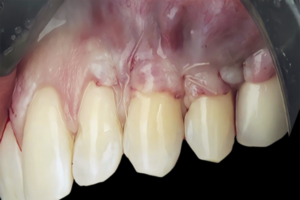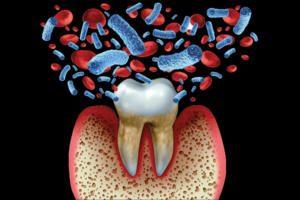Trabalho avalia o comportamento de reabilitações unitárias simuladas em região posterior de uma maxila com roscas em diferentes formatos.
AUTORES
Tania Carola Sanchez Mafla
Mestra do Centro de Pesquisas Odontológicas SLMandic.
Orcid: 0000-0002-3701-185X.
Milton Edson Miranda
Professor da pós-graduação da Faculdade de Odontologia – Centro de Pesquisas Odontológicas SLMandic.
Orcid: 0000-0002-5410-6500.
Karina Andrea Novaes Olivieri
Professora da pós-graduação da Faculdade de Odontologia – Centro de Pesquisas Odontológicas SLMandic.
Orcid: 0000-0001-8843-8901.
William Cunha Brandt
Professor da pós-graduação em Implantodontia – Unisa.
Orcid: 0000-0002-6362-0499.
RESUMO
Um dos aspectos mais importantes que influenciam o comportamento dos implantes curtos é o formato de rosca. Neste trabalho, avaliou-se, por meio de análises de elementos finitos, o comportamento de reabilitações unitárias simuladas em região posterior de uma maxila com roscas em diferentes formatos. Para isso, foram construídos modelos tridimensionais utilizando o software SolidWorks 2013 representando dois implantes curtos de 5 mm x 6 mm de conexão cone-morse, com formato de rosca triangular e quadrada, e uma coroa parafusorretida com todos os seus componentes (coroa de zircônia, pilar e parafusos), simulando um primer molar do maxilar quadrante direito. Todos os materiais no sistema osso-implante-coroa são isotrópicos, homogêneos e linearmente elásticos. No sistema coroa e implante, foi aplicada uma carga axial de 300 N. Os dados foram avaliados pelo critério de cisalhamento no osso cortical e medular, e a tensão de von Mises para os implantes e componentes protéticos. Os resultados mostraram que o formato da rosca afeta a distribuição das tensões no osso cortical e medular, sendo que o formato de rosca triangular (8,17 Mpa) apresenta um menor valor de tensão de cisalhamento no osso cortical do que a rosca quadrada (13,2 Mpa). Em relação à concentração de tensões de von Mises no implante, esta foi maior para o formato de rosca quadrada. Ambos os pilares protéticos apresentaram valores de tensão von Mises semelhantes. Também uma maior tensão foi apresentada para o parafuso de rosca triangular. O implante com formato de rosca triangular apresentou o melhor comportamento mecânico para o tecido ósseo cortical, já que apresentou uma melhor distribuição das tensões, principalmente na região coronal do implante. Esse tipo de rosca também beneficia o corte de tecido ósseo cortical e a inserção do implante.
Palavras-chave – Implantes; Biomecânica; Elementos finitos.
ABSTRACT
One of the most important aspects that influence the behavior of short implants is the thread shape. In this work, the behavior of simulated unitary rehabilitations in the posterior region of the mandible with threads of different shapes was evaluated through finite element analysis. For this purpose, three-dimensional models were constructed using SolidWorks 2013 software. These models represent two short implants of 5 mm x 6 mm of Morse Cone connection with triangular thread and square thread and a screwed crown with all its components (zirconium crown, abutment and screws), simulating a first molar of the right upper quadrant. All materials in the bone-implant-crown system are isotropic, homogeneous and linearly elastic. A 300 N axial load was applied to the crown and implant system. The data was evaluated using shear criteria in the cortical and medullary bone and the Von-Mises stress for implants and prosthetic components. The results showed that the thread shape affects the distribution of stresses in the cortical and medullary bone, since the triangular thread form (8.17 MPa) has a lower value of shear strength on the cortical bone than the square thread (13.2 MPa), respectively. About the stress concentration of Von Mises in the implant, this was greater for the square thread form; both prosthetic abutments showed similar Von Mises stress values. Also a greater tension is presented for the screw of triangular thread. The triangular screw-shaped implant presented the best mechanical behavior for the cortical bone tissue since it presented a better distribution of stresses especially in the coronal region of the implant. This type of thread also benefits when cutting of the cortical bone tissue and in the insertion of the implant.
Key words – Implants; Biomechanical; Finite elements.
Recebido em out/2021
Aprovado em nov/2021
Referências
- Pjetursson BE, Tan WC, Zwahlen M, Lang NP. A systematic review of the success of sinus floor elevation and survival of implants inserted in combination with sinus floor elevation. J Clin Periodontol 2008;35(suppl.):216-40.
- Chiapasco M, Romeo E, Casentini P, Rimondini L. Alveolar distraction osteogenesis vs. vertical guided bone regeneration for the correction of vertically deficient edentulous ridges: a 1-3-year prospective study on humans. Clin Oral Implants Res 2004;15(1):82-95.
- das Neves FD, Fones D, Bernardes SR, do Prado C. Short implants an analysis of longitudinal studies. Int J Oral Maxillofac Implants 2006;21(1):86-93.
- Renouard F, Nisand D. Short implants in the severely resorbed maxilla: a 2-year retrospective clinical study. Clin Implant Dent Relat Res 2005;7(1):104-10.
- Bornstein M, Valderrama P, Jones A. Bone apposition around two differents and blasted and acid-etched titanium implant surfaces: a histomorphometric study in canine mandibles. Clin Oral Implants Res 2008;19(3):233-41.
- Hasan I. Small and short dental implants. Biomed Tech 2010;55(6):341-50.
- Lai H, Si M, Zhuang L, Shen H, Liu Y, Wismeijer D. Long-term outcomes of short implants supporting single crowns. Clin Oral Implant Res 2013;24(2):230-7.
- van Staden RC, Li X, Guan H, Johnson NW, Reher P. A finite element study of short dental implants in the posterior maxilla. J Oral Maxillofac Implants 2014;29(2):e147-54.
- Bumgardner JD, Boring JG, Cooper Jr. RC, Gao C, Gilbert JA, Misch CM. Preliminary evaluation of a new dental implant design in canine models. Implant Dent 2000;9(3):252-60.
- Hansson S, Werke M. The implant thread as a retention element in cortical bone: the effect of thread size and thread profile: a finite element study. J Biomech 2003;36(9):1247-58.
- Kong L, Liu BL, Hu KJ, Li DH, Song YL, Ma P. Optimized thread pitch design and stress analysis of the cylinder screwed dental implant. Hua Xi Kou Qiang Yi Xue Za Zhi 2006;24(6):509-15.
- Ma P, Liu HC, Li DH, Lin S, Shi Z, Peng QJ. Influence of helix angle and density on primary stability of immediately loaded dental implants: three-dimensional finite element analysis. Zhonghua Kou Qiang Yi Xue Za Zhi 2007;42(10):618-21.
- Teixeira ER, Sato Y, Akagawa Y, Shindoi NA. Comparative evaluation of mandibular finite element models with different lengths and elements for implant biomechanics. J Oral Rehabil 1998;25(4):299-303.
- Holmes DC, Haganman CR, Aquilino SA, Diaz-Arnold AM, Stanford CM. Finite element stress analysis of IMZ abutment designs: development of a model. J Prosthodont 1997;6(1):31-6.
- Barão VA, Assunção WG, Tabata LF, de Sousa EA, Rocha EP. Effect of different mucous thickness and resiliency on stress distribution of implant-retained overdentures – 2D. Comput Methods Programs Biomed 2008;92(2):213-23.
- Cruz M, Wassall T, Toledo EM, da Silva Barra LP, Cruz S. Finite element stress analysis of dental prostheses supported by straight and angled implants. Int J Oral Maxillofac Implants 2009;24(3):391-403.
- Coelho PG, Silva NR, Thompson VP, Rekow D, Zhang G. Effect of proximal wall height on all-ceramic crown core stress distribution: a finite element analysis study. Int J Prosthodont 2009;22(1):78-86.
- Pjetursson BE, Tan WC, Zwahlen M, Lang NP. A systematic review of the success of sinus floor elevation and survival of implants inserted in combination with sinus floor elevation. J Clin Periodontol 2008;35(suppl.):216-40.
- Tan WC, Lang NP, Zwahlen M, Pjetursson BE. A systematic review of the success of sinus floor elevation and survival of implants inserted in combination with sinus floor elevation. Part II: transalveolar technique. J Clin Periodontol 2008;35(8 suppl.):241-54.
- Seker E, Ulusoy M, Ozan O, Doğan DÖ, Seker BK. Biomechanical effects of different fixed partial denture designs planned on bicortically anchored short, graft-supported long, or 45-degree-inclined long implants in the posterior maxilla: a three-dimensional finite element analysis. Int J Oral Maxillofac Implants 2014;29(1):e1-9.
- Sykaras R, Iacopino AM, Marker VA, Triplett RG, Woody RD. Implant materials, designs, and surface topographies: their effect on osseointegration. A literature review. Int J Oral Maxillofac Implants 2000;15(5):675-90.
- Moraes SLD, Carvalho BM, Pellizzer EP, Fálcon-Antenucci RM, Santiago-Jr. JF. Geometria das roscas dos implantes: revisão de literatura. Rev Cir Traumatol Buco-Maxilo-fac 2009;9(2):115-24.
- Gabriel M. A histomorphometric study of short and normal implants in human cadavers. Article in international. J Stomatol Occlusion Medicin 2013;6(4):151-6.





